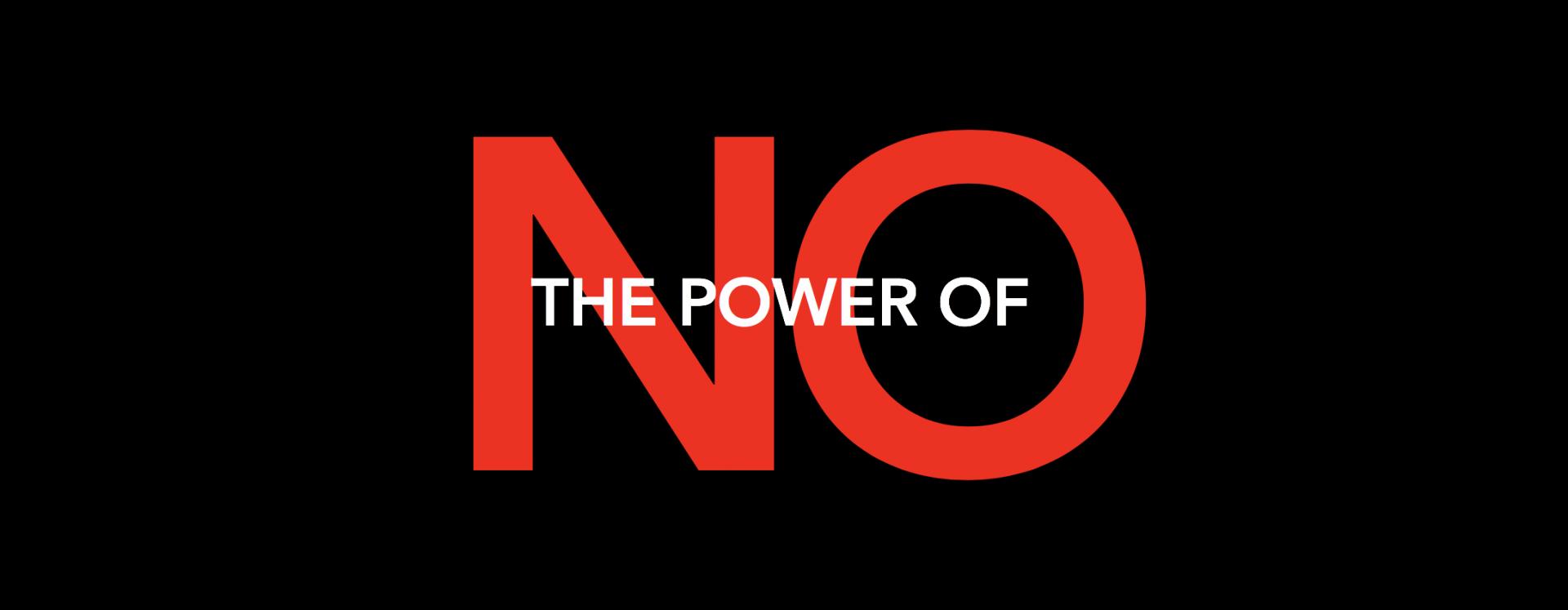“Really successful people say NO to almost everything,”
- Warren Buffet
Everyone in the business world agrees. Without the confidence and ability to say no, you burn out. You focus on things that don’t matter and are unable to put your energy into things that do. Worst of all, people lose respect for you.
Saying NO can be difficult. In his book Essentialism: The Disciplined Pursuit of Less, author and business consultant Greg McKeown dedicates an entire chapter to teach you how to say no.
You are at the top of your game. You knew how to say NO to your superiors which is why you no longer have any. You gracefully say NO to colleagues, subordinates, and customers so that you can maximize your impact with less effort.
But what about your children?
SETTING BOUNDARIES
Children need you to set boundaries. Children of indulgent parents are poor decision-makers, unable to manage their time and habits, and display low academic achievement. Decades of research show that children have the best life outcomes when their parents are communicative and in control.
Your child lives in a limitless world. They need you to construct limits for them when there is a danger, or when a situation would put unnecessary burdens on their ability to exercise willpower. For your young children, this might mean no free-for-all at the ice cream bar. For teenagers, parties with alcohol, drugs, and peer-pressure need to be banned.
Experience tells you that saying NO gets you poor results with your children. How do you make discipline less messy?

THE GRACEFUL NO
Imagine you are at your desk. You send out an email to your new CIO asking to have a meeting about your technology agenda for the coming year.
A few minutes later you get a ping in your inbox. A single word response from your new colleague:
“NO”
You hear the word in your head over and over again. “NO. NO. NO.” How do you feel?
Hearing NO shuts down the parts of our brain that help us solve problems and display pro-social behavior. We go into fight-flight-or-freeze. Dr. Daniel Siegel, NYT Best Selling author and professor of clinical psychiatry, calls this a 'No brain state.' You stop learning. You stop connecting.
Spending too much time in this space curtails a child’s development. Constantly in a reactive state, they can’t learn how to pause, explore options, and respond thoughtfully to their environment. This is why children of authoritarian parents also do poorly. They are unable to set their own goals, easily cave to peer pressure, and experience depression and anxiety.
You are in a peculiar situation where you need to say no but you can’t just say NO.
Luckily, you already know how to do that.
PART
Dr. Siegel uses the acronym PART to explain how to say no to children.
Present: Be present to their request. Understand what they’re asking for.
Attune: Recognize and name the emotion they’re having.
Resonate: Help them see that you understand and have had similar feelings.
Trust: Explain why you cannot serve their request and how you are going to move forward.
If those guidelines seem a bit mushy to you, then read The Harvard Business Review guidelines for saying no. Say no to the request, not the person. Explain why. Be appreciative. These are general courtesies we give to people who want or need our assistance.
When we use NO properly, we allow our children to stay in a “Yes Brain” state. We keep our children’s brains open, curious, and connected. This flexibility and responsivity allow them to develop the grit they need to succeed in life.

NO ACROSS THE AGES
0-6: Between 6 to 9 months, your baby starts to understand language. Then they start talking. Much later, they become good problem solvers, capable of controlling their emotions and communicating when upset. Through this whole period, your job is to help them find the words they need to express what they’re feeling.
When your toddler grabs for a sharp knife, you pull the knife away and see the early signs of a tantrum. You need to talk to them.
“I see that you want the knife. I can’t give this to you. I know not getting what you want sucks. I don’t like it either. I can’t give you this knife, but I can give you this spoon.”
7+: Your child has reached what is known as the age of reason. They are beginning to exercise some emotional control and think in more abstract terms. While an 8-year-old and a 15-year-old are different, your job stays the same. You involve them in the reasoning process. You need to talk with them.
“You want to go out with your friends, and I won’t let you. I can see that’s frustrating with you and I understand why. Why do you think I don’t want you going? What worries might I have? What would you do in my situation? Is there any way to assuage my concern?”
These kinds of questions will help build a rapport and develop your child’s perspective-taking and reasoning abilities.
YES, BUT…
Learning how to say no is important but should happen less rather than more often. Take a page out of the book of improv and learn how to do, “Yes, but…” with your child. Learn how to answer, “Can I…?” questions with, “Yes, but first you have to do the dishes,” or “Yes, but first we have to discuss the rules.” This should be the main tool in your arsenal when you get a reasonable request.
THE UNCONDITIONAL YES
Lastly, remember to not skimp on your pure, unadulterated yes. Does your child want your attention? Yes. Can you read a book to them? Yes.
Come up with a list of 5 things that you always want to answer “YES” to for your child and try to stick to it.
PRIORITY #1
Your family is priority number one, and within that domain, you juggle many balls. How often you say yes or no is not the kind of thing you need to measure at home. Instead, you need to ask yourself whether you are taking every opportunity possible to connect rather than manage. If you keep that in the forefront of your mind, your NO's will always be graceful and your YES’s” abundant.











